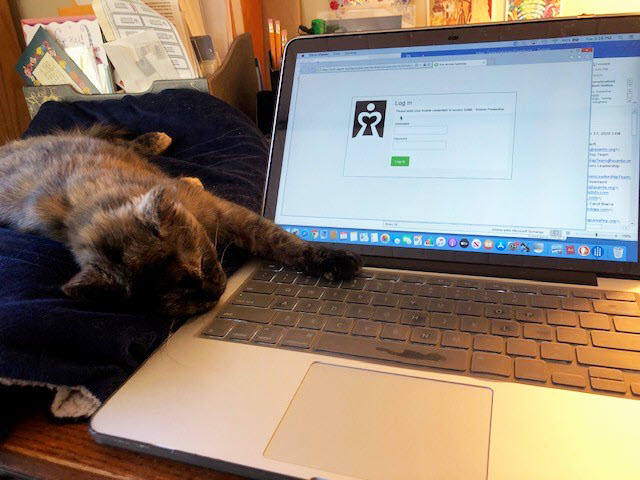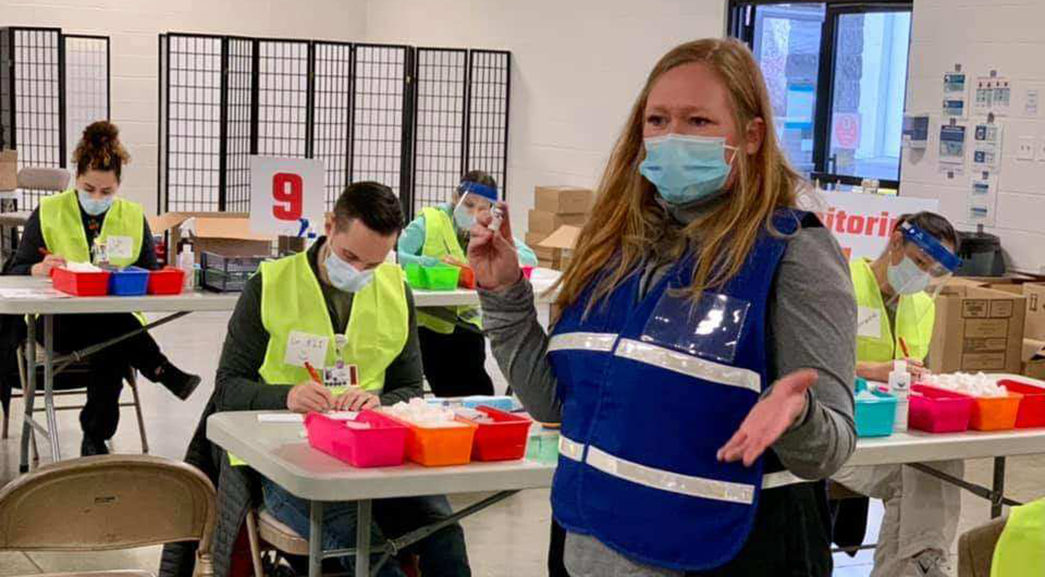Share:
Could it be that the pandemic that changed the world is beginning to make its exit? It’s too soon to celebrate, of course — people continue to get infected and, sadly, many are still dying. But the light is appearing at the end of the tunnel, and this time it’s not a train.
Oregon is literally counting the days until it reaches 70% first-dose immunization, the point at which the state will largely reopen. This means no capacity limits or masks in most public places (except for health care facilities, public transportation and other select environments), and a return to large outdoor gatherings, such as festivals.
Asante, like other health care organizations, must still abide by state and CDC guidelines and Asante’s pandemic precautions![]() regarding PPE, masking and physical distancing, and uphold current visitor restrictions.
regarding PPE, masking and physical distancing, and uphold current visitor restrictions.
 Yet there are other signs that we are heading back to normal, or at least a new normal:
Yet there are other signs that we are heading back to normal, or at least a new normal:
- Our average number of hospitalized COVID patients continues to hover at eight or fewer a day, compared with averages exceeding 50 during the surge in January.
- Vaccinations, which reached more than 3,000 a day at their peak, have receded to the point that the Community COVID-19 Vaccination Clinic will formally shut down on June 18 after giving its last shot.
- The Contact Center’s COVID-19 vaccination scheduling hotline, which employed a dozen people and took as many as 850 calls a day, halts operations on June 18. Those still wanting the vaccine are directed to public resources or their APP primary care provider.
- Elective surgery and procedure volumes have come back after operating at half-capacity last year.

- Many volunteers began returning to hospitals after a yearlong absence. Their roles are limited with the current restrictions, but their service is expected to return to normal once the pandemic is over.
- The Oregon Wine Experience, Asante Foundation’s largest fundraiser, plans to return to Jacksonville this summer with on-site events.
Whether this promising outlook can be sustained, however, depends on personal behavior and vaccinations. Jackson County’s vaccination rate is around 51%, and Josephine County’s is 44%. Asante’s employee vaccination rate is 60%.
“A stark picture has emerged,” Patrick Allen, director of the Oregon Health Authority, told Oregon Public Broadcasting. “There isn’t one pandemic in Oregon, there are two: One is a pandemic that is dying out among people who are vaccinated. The other is a pandemic that is raging as fiercely as ever among people who are unvaccinated.”
Will some COVID-era practices remain at Asante?
The pandemic has affected all aspects of Asante, from clinical to administrative. Although the changes were disruptive, some were for the better.
Video meetings have proven so convenient for employees and leaders, they’re likely to continue after other normal operations resume.
“It does make attending meetings a lot easier,” Chief Medical Officer Jamie Grebosky, MD, said at a recent Let’s Talk forum. “When I think of our operational meetings I’ve noticed that attendance has skyrocketed. People have busy lives and to make it to a physical space is sometimes really hard.”
Other activities that used to take place in person may stay virtual in the near future. The Asante Benefits Fair was so successful online last year that it will return in the same format for this year’s open enrollment in the fall.
 Asante Health Promotion has restarted some of its outdoor in-person challenges, but its educational events have moved from the classroom to the internet, which allows real-time and recorded presentations for later viewing.
Asante Health Promotion has restarted some of its outdoor in-person challenges, but its educational events have moved from the classroom to the internet, which allows real-time and recorded presentations for later viewing.
The other “new normal” may be a continuation of remote work for nonclinical jobs. The pandemic sent 1,300 administrative employees to work from home, and most have remained there until a decision is made on whether all employees should return to the office.

Robert Begg, vice president of Human Resources, said remote work may remain an option for Asante departments that have been successful with the model.
Speaking to employees last month, Dr. Grebosky reiterated the importance of vaccination for ending the pandemic for good.
“We want 100% of folks to be vaccinated,” he said. “This is a lifesaving intervention. We’re going to lose 600,000 people to this. This is a major cause of mortality. As a family doctor, when I look at interventions, there’s almost nothing that I could do that’s as beneficial as this vaccination.”
Where to get the vaccine
The high-volume clinic is closed for first doses, but there are other places to get the COVID-19 vaccine:
- Asante Urgent Care, Medford (walk-in)
- Jackson County Expo Center
- Retail pharmacies
- Asante Urgent Care, Grants Pass (walk-in after July 1)
- APP primary care clinics (after July 15, appointment only)
By the Numbers
Asante not only worked to ensure employees were vaccinated, it played a pivotal public health role in two counties.

As part of this work, Asante:
- Helped organize drive-thru mass vaccinations in Jackson and Josephine counties.
- Set up a community COVID-19 vaccination hotline, which took as many as 3,480 calls in a single day.
- Hired 15 temporary staff members to man the phone lines.
- Helped establish the Community COVID-19 Vaccination clinic, which administered more than 1,200 doses a day.
- Administered more than 60,000 doses overall.
“Help Bring Us Back Together”
Asante launched a public awareness campaign to encourage vaccination, first among employees then the broader public through advertising and billboards. The aspirational messages are meant to remind us of what we can regain when the pandemic is over.
If you have a question, please contact the author or relevant department directly.




